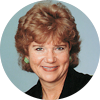Last week, my friend, now in her late 60s, visited me and asked a "favor." Over the years, I had become a surrogate daughter to her and she had no other family. My friend wanted to write her advance directives and she wanted me to guide her through the exercise of assembling her financial documents. Though I have had some meaningful discussions with my own parents about these decisions, we have mostly skirted the specific issues, so I thought this would be good practice, a dry run if you will, for my own education. What an education!
We began by choosing a time to sit down for the discussion. We both found ourselves performing irrelevant tasks when it got close to the scheduled hour. Finally, we sat down. A free booklet from the AARP, Shape Your Health Care Future with Health Care Advance Directives,1 guided our first discussions. The booklet is an easy to follow six page guide complete with a form and instructions. We went through its very focused, painless format and the whole exercise only took about thirty-five minutes. We both felt great! Taking it to a bank to get it notarized completed the process. My friend kept the original, I got a copy, and I suggested she supply a copy to her physician and her health care facility. It was painless. We both felt so relieved, we decided to tackle the next part of the discussion.
Here's where things got tough. I had recently clipped out an article from USA Today.2 It included a documents checklist under several headings; emergency papers, non-financial personal papers, investment documents, financial personal papers, bank and credit card accounts, and insurance documents. As we went through each of the items in the listed categories, it was common for my friend to say, "Well, I have that somewhere." For example, my friend had been meaning to send me a key to the safety deposit box, but without it, I had no access.
Some of the items did not apply to her, such as the questions dealing with mortgage documents, since she does not own a home. However, items pertaining to her bank accounts and certificates of deposit (that for the first time I learned also had my name on them) were noted and listed. One of the questions relative to social security deposits flustered my friend because since she was still employed, she was unsure how much was being deposited automatically into her bank account monthly. Matching funds from her employer into her retirement account were also a source of confusion as her selection of an aggressive investment vehicle was highly volatile and variable.
We continued to muddle through, not without some upset and frustration at the many facets and the impact of finances in every area of life. My friend complained of a headache. Finally, with the calming influence and help of my husband, we completed the checklist. I mention my husband's influence for two reasons: first, for women of this generation, it was the man who usually handled the finances and discussions related to money matters and my friend was visibly relieved with a man present, and second, he suggested we contact the social security office for a statement of earnings, which we ended up doing for ourselves as well (1-800-772-1213).
The compilation of family documents is an overwhelming exercise -- anytime. When one is trying to assemble, organize and clarify someone else's documents, it may be even more complex. And, it doesn't have to be. At the end of this exercise, each of us felt better. My friend felt relieved that I knew what she wanted and she went home with a checklist of things to assemble for me. Both my husband and I shook our heads in wonder at the many components, physical, emotional and financial that make the assignment a taxing one.
The trick I think, is to set some time aside, get a loose-leaf binder that can be indexed, and practice the discussions with your own spouse or another friend first. Then, make time for your parents. Remember the aim of the exercise is for everyone involved to have a clear understanding of the person's health care directives and financial documents. An organized system such as a checklist assembled in a binder will eliminate the frantic hunting of such critical documents when they are most needed.
If you would like a copy of the Family Document Checklist, send me a self-addressed stamped envelope (P.O. Box 242, Lakeside, MT 59922) and I will be happy to mail these out to you. As always, questions and comments are most welcome.
References
- American Association of Retired Persons (1995). Shape Your Health Care Future with Health Care Advance Directives. Programs Division (PF5302(795) D15803. Washington, DC.
- Davidson P. Financial ignorance can exacerbate loss of parent. USA Today: June 6, 1997, p. 5B.
Barbara Zapotocky, DC, MA
Lakeside, Montana
Click here for previous articles by Barbara Zapotocky-Cook, DC.





